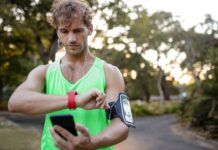Can simply sitting up during your stroke make the boat go faster?
All dragon boat paddlers know that when there is movement in the boat, there is an effect on the boat. Sometimes this movement can be used for good. Sometimes for evil.
Rowers, with their sliding seat, experience an effect on the boat due to their body movement as they slide forwards and backwards through the stroke.
A previous, fairly detailed Dragon Analytics post covered how movement of bodies within the boat affected the speed of the boat. Read it for a more mathematical view of the topic. This post will give you an idea of the concept.
Some dragon boat coaches encourage a pivoting at the hip as part of their technique. This shifting of a paddlers’ bodies backwards and forwards has an effect on the speed of the boat. Sometimes good. Sometimes evil.
…. The remainder of this content is for members only…














Interesting…
Hope everyone sees this.
Do it all the time!!
Very interesting and different from our stroke.
Thanks Patricia,
Yes it may well be different from your stroke. And to be honest, I am not yet 100% sold on the idea that we can get the pros without the cons. So let’s call this idea work in progress until we get some hard data.
Exit is too far back, in my opinion…and the paddler seems to be pivoting around the bottom hand, which bleeds off thrust far too soon…..again, in my opinion..
Hi Mike,
Thanks for your feedback. The graphic’s main purpose was to show the movement of the paddler’s mass during a stroke. The technique depicted has some flaws (some of which you have highlighted) which I will address in future posts. Well spotted.
It’s very difficult to accurately criticise the stroke here when there isn’t a paddle to be seen. Core strength and leg drive through the stroke should lever the body up and back and I for one believe that rotation through the stroke lengthens the positive angle of the blade at the back of the stroke too. Acceleration at the back of the stroke is quite possible but I have yet to actually prove with our crew that it is a helpful technique in races.
Hi I do find this interesting as it ties in with my thoughts on recovery! I’ve been experimenting with various aspects of the stroke cycle over several years & more recently on recovery speed. For example the effects on energy & power during the stroke cycle and ultimately on the run of the boat.
I’d agree with a slightly slower recovery than a snappy whipping the paddle forward as it does seem to effect the run of the boat somehow. Slowing recovery didn’t slow speed… but you need a strong pull through. Essentially it allows your energy to focus more power at the catch & pull through, thus a more fluid stroke with ‘recovery’ for the next stroke, therefore could be more energy efficient for the paddler and with this concept in mind, with the boat too!
Obviously there are so many variables to consider such as technique (major factor) boat craft & conditions etc. I’ve spent many many many hours experimenting with technique & speed with data gadjects in my 01 (training outrigger kayak) and also monitoring them in the dragon boat. I encourage only technique in my outrigger boat…. well as close to a dragon boat stroke in single boat as possible, which does seem to get very similar readings. Bearing in mind the varying factors in weight of the boats etc…etc.. Furthermore, I single scull (& sweep row) and this initiated some of my thoughts about how vessels run on the water… one can learn a lot from a bow wave!
Many thanks it’s good to see people take interest in developing our sport.
Looks like a C1 stroke and posture. Those boats are super light and a slow recovery is what they need to maintain as much as possible. Dragonboats are heavy and don’t lose momentum like a C1, so the more efficient way to maintain glide is to be short in the air and long in the water, the opposite of what was demonstrated here. My 2 cents of course but that’s what I see.